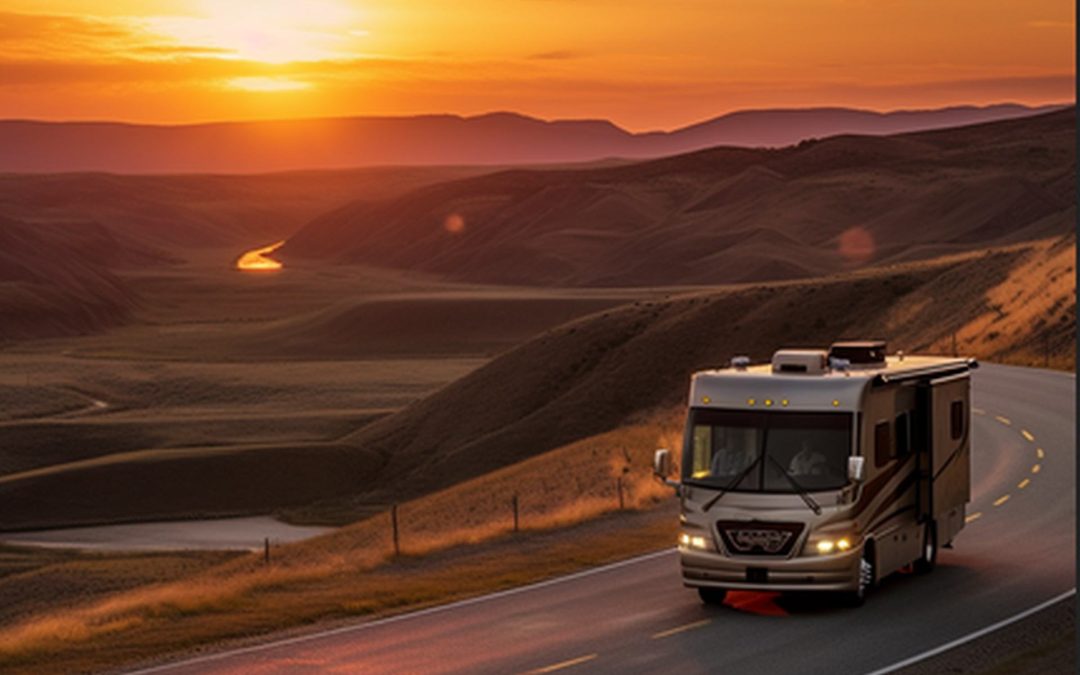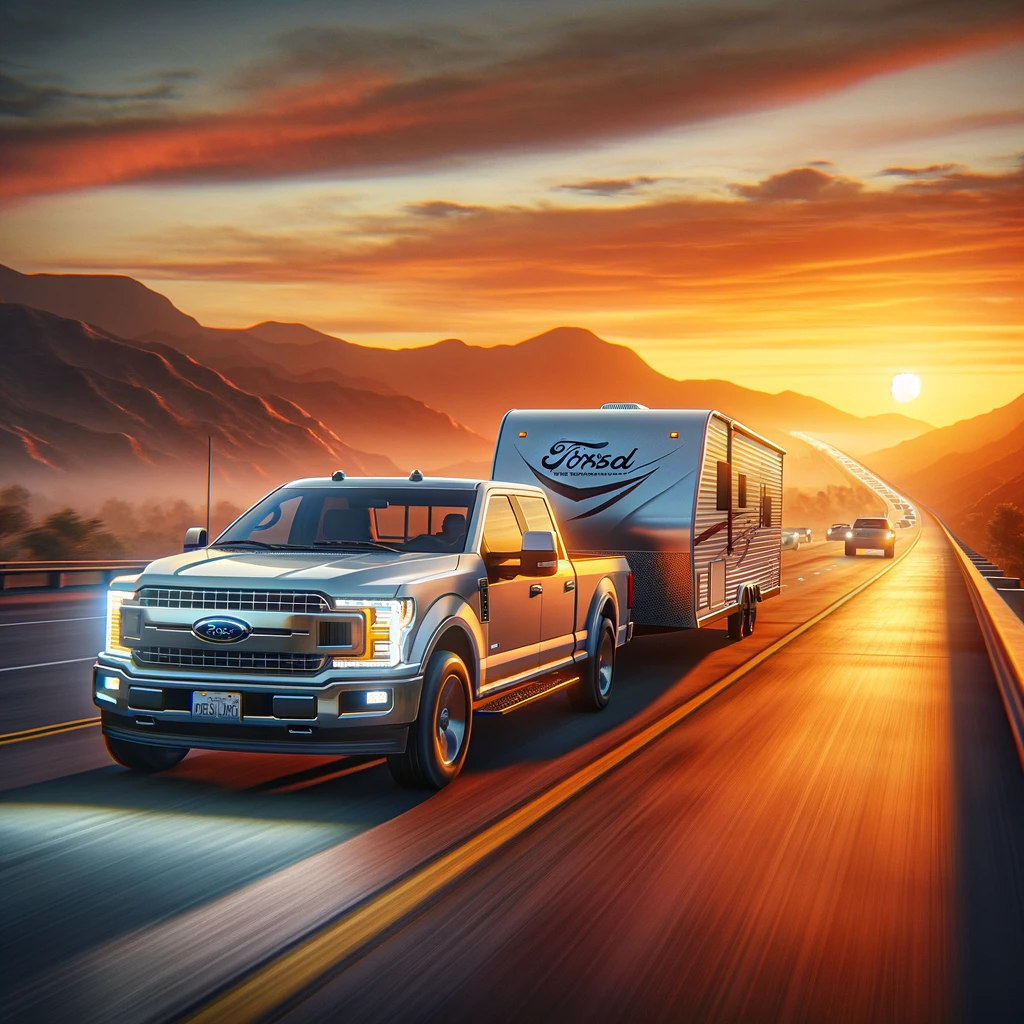The open road beckons, and the spirit of adventure whispers. But before embarking on your RV journey, remember: it’s more than just cruising towards picturesque landscapes. RVing demands mastery of driving dynamics, towing fundamentals, and a well-considered choice of your perfect motorhome or trailer. This comprehensive guide unlocks the essentials of RV driving and towing, empowering you with the knowledge to ensure a safe, enjoyable, and unforgettable experience.
Here’s what you’ll discover:
- Selecting your ideal RV: Learn how to choose the perfect match for your lifestyle, driving preferences, and specific needs.
- Getting comfortable: Familiarize yourself with your RV’s controls, adjust for optimal comfort and visibility, and adopt safe driving practices.
- Towing tips for trailers: Master the art of trailer selection, connection, weight distribution, and braking for a smooth and confident towing experience.
- Parking and maneuvering: Practice your skills in parking and reversing, and navigate tight spaces with ease.
- The ultimate RV towing guide collection: Delve into a wealth of resources packed with expert advice, vehicle-specific recommendations, and essential tips for towing across any distance.
Selecting Your Ideal Motorhome
Whether you’re a seasoned RVer or a budding adventurer, this guide equips you with the knowledge and confidence to turn your RV dreams into reality. So, buckle up, explore, and make memories that last a lifetime!
Whether you’re a seasoned RVer or a budding adventurer, this guide equips you with the knowledge and confidence to turn your RV dreams into reality. So, buckle up, explore, and make memories that last a lifetime!
Choosing the right RV isn’t just about picking the shiniest model on the lot. It’s about finding a mobile haven that perfectly complements your travel dreams and lifestyle. Here’s what to consider before you take the plunge:
1. Size & Weight: Maneuverability Matters
Imagine navigating charming towns and scenic byways. Will your chosen RV feel like a nimble explorer or a cumbersome behemoth? Ensure its size matches your comfort level behind the wheel and fits comfortably in your planned destinations (think campgrounds, parking lots, narrow roads). Remember, weight matters too! Don’t exceed your tow vehicle’s capacity if you’re planning to bring your own chariot along.
2. Layout & Amenities: Your Home Sweet Home Away
Picture yourself whipping up meals in a compact galley or enjoying family movie nights in a spacious living area. Think about how many people will be traveling, their sleeping arrangements, and the amenities you can’t live without (full bath, outdoor kitchen, bunk beds?). Choose a layout that feels like home, not a cramped apartment on wheels.
3. License to Roam: Don’t Get Caught Short
Knowledge is power, especially when it comes to driver’s licenses. Research if your dream RV requires a special license class. Getting caught unprepared could put a damper on your adventure. Be proactive and ensure you’re legally equipped to hit the road with confidence.
Getting Comfortable with Your Motorhome
Before embarking on your adventure, it’s time to transform your RV’s driver’s seat into your personal command center. Take some time to familiarize yourself with its unique features and controls, ensuring both maximum comfort and optimal visibility.
1. Mirror, Mirror on the Wall: Eliminate Blind Spots Like a Pro
Those bulky side mirrors aren’t just for decoration! Learning to adjust them properly is mission-critical for eliminating blind spots and seeing everything happening around you. Here’s the key:
- Flat Mirrors: Adjust them to see just a sliver of your RV’s edge along the bottom. This way, you capture the road behind you and alongside your RV in one glance.
- Convex Mirrors: Extend your vision further by angling them down and out, maximizing your view of traffic alongside your RV.
2. The Perfect Fit: Find Your Driving Zen
Imagine cruising down the highway with relaxed shoulders and confident control. Adjust your driver’s seat so you can easily reach all pedals and controls. Don’t forget the steering wheel! Position it for slightly bent arms, ensuring comfortable and fatigue-free driving.
Remember: Taking the time to personalize your RV’s controls before hitting the road can make a world of difference in your driving experience.

Safe Driving Practices
Now that you’re comfortable at the helm, let’s talk about mastering safe driving practices in your RV. Remember, these behemoths handle differently than your everyday car, so buckle up for some essential tips:
1. Brake Like a Feather, Not a Brick:
Forget about slamming on the brakes! Due to their size and weight, RVs require significantly longer stopping distances. Here’s the key:
- Maintain Safe Speed: Adjust your speed based on road conditions, weather, and traffic. Think slower is smoother and safer for everyone.
- Increase Following Distance: Leave ample space between you and the vehicle ahead. Double the distance you’d normally use in your car, especially on hills and downhill stretches.
- Anticipate and Brake Gently: Apply brakes gradually and smoothly, avoiding sudden stops that could destabilize your RV. Remember, gentle feathering is key!
2. Merging and Lane Changes: Be Seen, Be Safe:
Joining the highway flow or changing lanes requires extra caution in an RV. Here’s how to do it like a pro:
- Plan Ahead: Check mirrors and blind spots well in advance, ensuring a clear path before initiating any maneuvers.
- Signal Early and Often: Use your turn signals consistently and well beforehand, giving other drivers ample warning of your intentions.
- Shoulder Check, Don’t Just Mirror: Don’t rely solely on mirrors! Glance over your shoulder for a final confirmation before merging or changing lanes.
- Take Your Time: Don’t feel pressured to rush. Wait for a safe opening and complete your maneuver calmly and confidently.
Remember: By adopting these safe driving practices, you’ll ensure a smooth and enjoyable journey for yourself and others on the road.
Towing Tips for Trailers
Towing a trailer adds a whole new dimension to your RV adventure. But fear not! With the right knowledge and practices, you can confidently conquer the open road with your trailer in tow.
1. Trailer Matchmaker: Find Your Perfect Pair
Choosing the right trailer is like finding your soulmate – it needs to perfectly complement your tow vehicle. Don’t get starry-eyed by the biggest, fanciest model. Instead, focus on finding one that matches your tow vehicle’s capacity (weight and size) like a hand in glove. Remember, exceeding capacity is a safety hazard and a recipe for disaster.
2. Connect with Confidence: Double-Check Everything
Connecting your trailer isn’t child’s play. Treat it like a pre-flight checklist:
- Hitch Up Right: Ensure the hitch is properly aligned and secured, leaving no room for wobble.
- Chain of Command: Double-check your safety chains are securely attached to both the trailer and your tow vehicle, crisscrossing underneath for added security.
- Electricity Flow: Make sure the electrical connection between your vehicle and trailer is functioning properly, powering lights and signals.
3. Brake Like a Boss: Don’t Leave Stopping to Chance
Not all trailers are created equal, and some require a dedicated brake controller to ensure synchronized braking with your tow vehicle. If your trailer has electric brakes, installing a brake controller is a must.
4. Balance is Key: Prevent the Sway
Imagine your trailer gracefully following your lead, not dancing wildly behind you. To achieve this harmony, ensure even weight distribution within your trailer. Load heavier items closer to the axle and distribute weight evenly across both sides. This prevents trailer sway, making your towing experience smoother and safer.
Remember: Towing requires extra attention and practice. Start with short distances in controlled environments to get comfortable before hitting the highway on your grand adventure.
Mastering Parking and Maneuvering
Parking and maneuvering your RV might seem daunting at first, but with practice and the right techniques, you’ll be navigating tight spaces like a pro. Remember, practice makes perfect, so don’t be shy about finding empty parking lots to hone your skills before tackling real-world challenges.
1. Parking Proficiency: Angle, Parallel, and Beyond
Whether you’re facing a head-on angle parking situation or attempting a parallel parking feat, mastering different techniques is key. Here’s what to remember:
- Angle Parking: Take it slow and wide, using your mirrors and turning points strategically to avoid clipping curbs or neighboring vehicles. Think “slow and steady wins the race”!
- Parallel Parking: This can be tricky, but with practice and the right strategy, you’ll be a pro. Utilize landmarks and turning points to guide your RV into the space, and don’t be afraid to pull forward and back up multiple times to get it just right.
- Remember: Always adjust your approach based on your RV’s size and the available space. Don’t be afraid to ask for help from a spotter if needed.
2. Taming Tight Spaces: Navigate Like a Ninja
Cramped campsites and narrow streets can test your RV maneuvering skills. Here’s how to navigate them like a ninja:
- Go Slow and Steady: Patience is key! Rushing will only increase the risk of mishaps. Take your time, assess the situation, and plan your maneuvers carefully.
- Mirror Magic: Your mirrors are your best friends in tight spaces. Use them diligently to monitor clearance on both sides and behind your RV.
- Spotter Power: If possible, enlist the help of a trusted spotter to guide you through particularly tight squeezes. Their extra eyes can make all the difference.
- Remember: Don’t be afraid to get out and walk around your RV to assess the situation before making any moves. An extra minute of planning can save you a lot of trouble later.
Bonus Tip: Practice reversing your RV in controlled environments. This skill will come in handy when maneuvering in tight spaces or backing into campsites.
Resources
-
-
- RV Driving School – https://www.rvschool.com/ This website offers RV driving courses and provides tips for safe and efficient RV driving.
- National Highway Traffic Safety Administration (NHTSA) Towing Guide – https://www.nhtsa.gov/road-safety/towing NHTSA’s towing guide offers valuable information on towing safety, regulations, and equipment.
- RV Travel – https://www.rvtravel.com/ RV Travel is a popular online magazine and blog that covers various RV-related topics, including driving tips, maintenance, and camping.
- Good Sam Club – https://www.goodsam.com/ The Good Sam Club is a well-known RV club that provides a wealth of resources and information on RVing, including driving tips, campground recommendations, and community forums.
-
Driving or towing an RV can be an enjoyable and rewarding experience, but it requires patience, practice, and an understanding of safe driving techniques.


